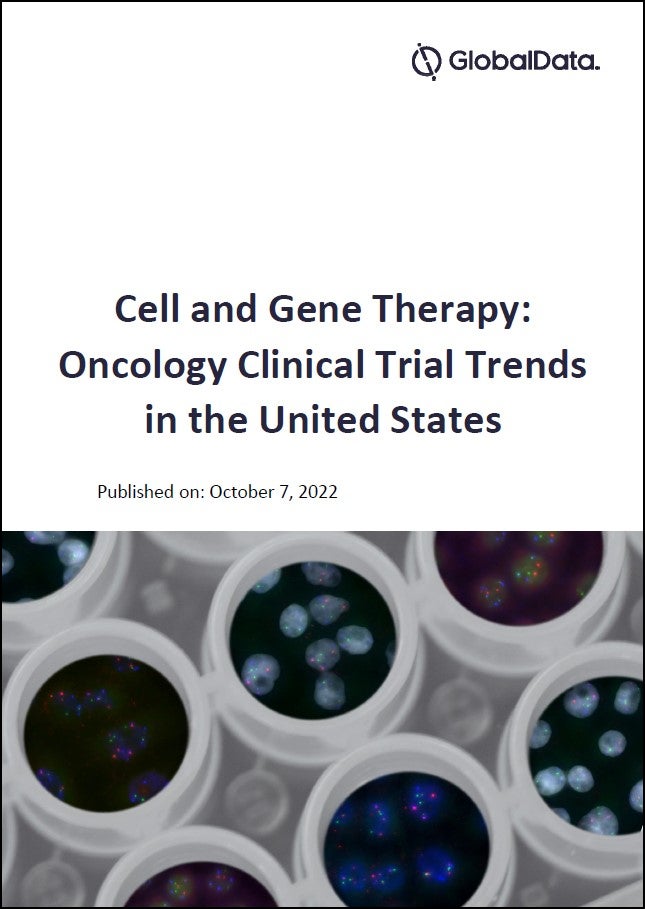One year since frontline Keytruda made a splash in a rare colorectal cancer subgroup, treatment options for patients who progress still in contention
Need to Know:
- In June 2020, Keytruda was FDA approved and subsequently became the standard of care as frontline treatment in microsatellite instability high or mismatch repair deficient colorectal cancer
- The previous frontline standard is chemotherapy and thus is the logical new second-line standard. But the Braftovi plus Erbitux combo may be used in patients who also have the BRAF mutation
- However, there are still questions if using the more targeted Braftovi/Erbitux combo would offer better efficacy than chemo
The best suited second-line (2L) option for microsatellite instability high (MSI-H) metastatic colorectal cancer (CRC) patients who progress from Merck’s Keytruda is still under debate. It has been more than a year since Keytruda secured its spot as the new frontline (1L) standard of care (SOC) in MSI-H or mismatch repair deficient (dMMR) patients.
How well do you really know your competitors?
Access the most comprehensive Company Profiles on the market, powered by GlobalData. Save hours of research. Gain competitive edge.

Thank you!
Your download email will arrive shortly
Not ready to buy yet? Download a free sample
We are confident about the unique quality of our Company Profiles. However, we want you to make the most beneficial decision for your business, so we offer a free sample that you can download by submitting the below form
By GlobalDataIt is logical to assume the original 1L SOC, chemotherapy, would be shifted to 2L in patients who progress on Keytruda, experts said. However, Pfizer’s BRAF inhibitor Braftovi, in combination with Eli Lilly’s EFGR inhibitor Erbitux, may be best for 2L patients who have a BRAF mutation.
There is an overlap in patients who have both MSI-H and BRAF mutation tumours. It is unclear if there is a distinct efficacy advantage when Braftovi with Erbitux is used in BRAF mutation patients after Keytruda failure, or in the third line after Keytruda failure and failure of one line of systemic therapy.
Swift 1L uptake upon approval
Nevertheless, experts noted Keytruda monotherapy’s approval in 1L in June 2020 met with swift uptake from physicians. Recently released data showing the registrational Phase III KEYNOTE-177 trial did not meet the coprimary endpoint of final overall survival (OS) is unlikely to quell interest. The trial design is one explanation for this result, as it allowed for chemotherapy patients to crossover to Keytruda, and there is still a trend regarding OS benefit with Keytruda, they explained.
With Keytruda solidifying its territory in 1L, experts noted side-effect monitoring needs to be amplified, especially in community oncology centres, as they may not be as experienced in prescribing Keytruda.
Unclear 2L choice post-Keytruda
There is still uncertainty about the best therapeutic option for patients who progress from 1L Keytruda, said Dr Ronald DePinho, professor, Department of Cancer Biology, University of Texas MD Anderson Cancer Center, Houston. The previous 1L SOC, chemotherapy, could be considered the new SOC in 2L MSI-H CRC patients who received Keytruda in 1L, regardless of their molecular profile, added Dr Marwan Fakih, professor, Medical Oncology and Therapeutics Research, City of Hope Comprehensive Cancer Center, Duarte California. In KEYNOTE-177, the active comparator arm is a 5-fluorouracil-based therapy with or without Roche’s Avastin or Erbitux.
Notably, there is an overlap between MSI-H patients and patients with a BRAF mutation, said Dr Axel Grothey, medical oncologist, West Cancer Center and Research Institute, Germantown, Tennessee. This means BRAF inhibitors could be used in these 2L patients, he added.
The attraction behind BRAF inhibitors in 2L is the way they can target both cancer and immune system cells, DePinho said. They reprogramme the tumour microenvironment to make it more sensitive to immunotherapy, he added.
Extrapolation a challenge
Chemotherapy is effective in BRAF mutation patients in the 1L setting, although there is still lack of clarity about whether this experience is extrapolatable in patients who progress from 1L Keytruda monotherapy, Fakih said. BRAF inhibitors may be best after one line of chemotherapy failure in patients who have a BRAF mutation, he noted.
Pfizer passed this news service’s request for comment to Paris, France-based Pierre Fabre, which owns the rights to Braftovi in Europe. A Pierre Fabre spokesperson said Braftovi plus Erbitux’s approval is based on the Phase III BEACON trial, which included patients who have the BRAF V600E mutation and have MSI-H/dMMR CRC. However, there is no data in BEACON in patients who have received Keytruda in 1L, the spokesperson added. Braftovi plus Erbitux received FDA approval for use after a prior therapy in April 2020, only two months before Keytruda was approved in 1L. Merck did not respond to a comment request.
Diagnosis accessible
Only one-third of all patients have both MSI-H tumours and a BRAF mutation, experts said. Nonetheless, BRAF mutation testing is accessible at the time of diagnosis, noted Dr Rona Yaeger, medical oncologist, Memorial Sloan Kettering Cancer Center, New York. As such, lack of testing is an unlikely bottleneck set to trigger decisions between the two options, experts added. The presence of a BRAF mutation in a dMMR tumour is sporadic.
In patients who have a poor Eastern Cooperative Oncology Group (ECOG) performance status, the use of BRAF plus EGFR inhibitors may be a better choice since they have a favourable side-effect profile compared with chemotherapy, Fakih said. Braftovi’s FDA label notes its most common adverse reactions (>25%) are fatigue, nausea and vomiting, among others.
Looking ahead, several options could be considered for use in the 2L, DePinho said. Targeting alternative checkpoint inhibitors such as CTLA4 may be a possible candidate, although the issue with these approaches is their toxicity profiles, he noted. Another option is targeting myeloid-derived suppressor cells, as they are prominent during checkpoint inhibition, he added. These myeloid cells are important as they modulate T-cell response, which would attack tumour cells, he explained.
More preclinical research needed
There is still more work to be done to understand why patients progress from Keytruda and to figure out the ideal 2L therapy for these patients, DePinho said. In KEYNOTE-177, some patients do not respond to Keytruda in the first few weeks of treatment, and these are the ones who might be best to stay on chemotherapy as their 1L option, Yaeger added. While it is unclear who these patients might be, there is preclinical work looking for Keytruda non-responders, such as those who have a deleted IFR2 gene being less responsive, DePinho noted.
KEYNOTE-177’s impact in the treatment paradigm was swift, experts said. In fact, many clinicians started prescribing Keytruda monotherapy in these patients even before KEYNOTE-177 results were announced, basing their decisions on earlier data, Fakih and Grothey noted. In KEYNOTE-177, in the median PFS coprimary endpoint, Keytruda delivered 16.5 months versus 8.2 months with chemotherapy.
In the final OS analysis performed 12 months after the second interim analysis, which was a trial coprimary endpoint, the hazard ratio (0.74) favoured Keytruda (not reached) over chemotherapy (36.7 months). There was also a trend towards reduction of the risk of death, but the difference did not reach statistical significance (p=0.0359).
Crossover design muddy data
Experts were not alarmed with this result, as KEYNOTE-177’s trial design allowed crossover among patients. In KEYNOTE-177, chemotherapy patients could crossover to Keytruda for up to 35 cycles after confirmed progressive disease. This means the OS data is measuring the cumulative effect of all treatments the patient has received, making data challenging to interpret, Yaeger said. The crossover trial design is beneficial for patients but problematic when it comes to calculating OS, as some patients may not crossover, DePinho added.
With Keytruda gaining traction among community oncologists, the next challenge is to ensure physicians are attuned to monitoring and treating side effects, DePinho said. Keytruda can have severe, life-threatening, immune-related events, he added. Community oncologists may not be as experienced with such immune therapies as academic centres where clinical trials are typically conducted in a setting with close monitoring and supportive care, he explained.
Keytruda’s FDA label carries a warning about immune-mediated adverse reactions, which may be severe or fatal and can occur in any organ or tissue. These issues include immune-mediated pneumonitis, colitis and hepatitis.
On June 2020, this news service reported experts were mixed on the next combination step for Keytruda monotherapy to reduce disease progression in 1L MSI-H or dMMR CRC. Experts suggested various approaches, such as combining Keytruda with chemotherapy cocktails FOLFOX or FOLFIRI, or combining it with an anti-CTLA4. This question is still unresolved, noted KEYNOTE-177 investigator Dr Philip Philip, medical oncologist, Karmanos Cancer Institute, Detroit, Michigan. More work needs to be done to understand why patients progress in the first place, and to establish what ideal combination approaches would be, DePinho added.
Merck has a market cap of $194.79bn, while Pfizer’s is $240.7bn.
Reynald Castaneda is an Associate Editor for Clinical Trials Arena parent company GlobalData’s investigative journalism team. A version of this article originally appeared on the Insights module of GlobalData’s Pharmaceutical Intelligence Center. To access more articles like this, visit GlobalData.










Related Company Profiles
Pfizer Inc
Merck & Co Inc
Eli Lilly and Co